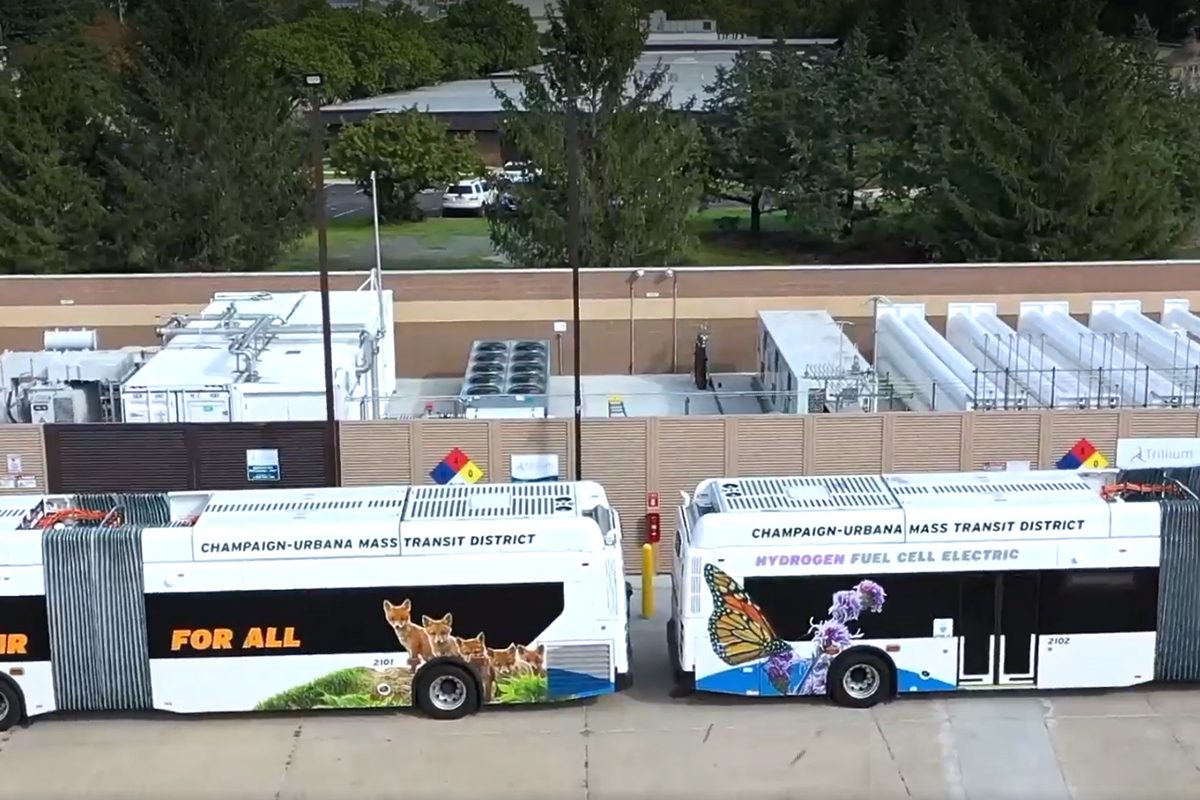Hydrogen fuel cell electric buses are zero-emission vehicles powered by hydrogen fuel cells that emit only water vapor at the tailpipe, making them an excellent solution for the public transportation market as it begins to decarbonize its fleets. While fuel cell electric vehicles (FCEVs) are still available in limited production, the number of fuel cell electric buses announced by transit continues to grow, allowing transit fleets to lead the way in adopting FCEVs while gaining valuable experience with an efficient, clean, and innovative new technology.
Growth Potential for Hydrogen Fuel Cell Vehicles
As the FCEV market develops, it also continues to experience growth due to record-setting federal, state, and private investment in both vehicle development and infrastructure. In addition, regulations such as the Innovative Clean Transit Rule in California, augment these investments by requiring transit agencies to transition to a zero-emission fleet by 2040 in order to meet local air quality standards and statewide greenhouse gas (GHG) emissions reduction goals. Many local transit authorities beyond California are also searching for the best alternative fueling solution to eliminate tailpipe emissions and comply with developing regulations. The California Hydrogen Business Council (CHBC) is just one organization that finds fuel cell electric buses as a one-for-one replacement for conventional diesel and compressed natural gas (CNG) buses but with zero tailpipe emissions.
Benefits of FCEV for Public Transit
Fuel cell electric buses are an attractive option for the public transit market due to several key benefits and advantages:
Hydrogen fuel cell electric buses are zero-emission and more efficient than conventional internal combustion engines. They produce no harmful tailpipe emissions, making them a proven zero-emission solution for public transportation and allows local transit agencies to improve air quality while achieving environmental, social, and governance (ESG) goals.
With a proven range of up to 350 miles, the range and performance of a fuel cell electric bus is comparable to diesel and CNG buses. It can be a one-to-one vehicle replacement to conventional fuels, and it doesn’t negatively impact existing route planning and operations.
In addition, fuel cell buses have high energy efficiency. The energy efficiency of a hydrogen fuel cell is substantially higher than a conventional internal combustion engine, meaning fuel cell buses require less fuel to travel the same distance.
Lastly, fuel cell buses can have a relatively quick refueling time of 7-10 minutes, which is comparable to refueling a diesel or CNG bus. Refueling can take place at any bus fueling depot designed for hydrogen delivery or onsite hydrogen production.
Trillium Takes a Leadership Position in Hydrogen Fueling Stations Development
Over the last two decades, Trillium has been providing clean fuel solutions to transit fleets across the country— from providing low to zero carbon renewable natural gas to hydrogen.
In 2020, Trillium built one of the nation’s first heavy-duty hydrogen vehicle fueling stations in Santa Ana, California to fuel Orange County Transportation Authority’s (OCTA) buses. This station can fuel a bus in six to ten minutes, allowing OCTA to service their existing routes without any substantial operational changes. Although OCTA is currently utilizing the station with only 10 fuel cell electric buses, the station is future proofed, allowing the fleet to grow to 50 buses with minimal upgrades.
Trillium also partnered with the Champaign-Urbana Mass Transit District in Illinois for a green hydrogen fueling station to power the district’s growing fleet of fuel cell buses. The transit district’s green hydrogen is produced on-site via electrolysis and solar power generation.
In 2022, Trillium became a founding member of the Hydrogen Fuel Cell Bus Council, a national coalition of public transit agencies, manufacturers, and fuel providers formed to advance the hydrogen fuel cell electric bus economy and its applications in the public transit market. The council members work together to educate policymakers, regulators, and other stakeholders on the benefits of fuel cell electric buses and the related infrastructure.
Future Growth Opportunities with Big Air Quality Benefits
While there are still challenges associated with the widespread adoption of hydrogen fuel cells, there is significant potential for larger use in the transportation industry as technology advances and access to fueling infrastructure improves.
Overall, hydrogen has the potential to make a significant impact on improving air quality in our local communities and is poised to make an immediate impact to the transportation industry by enabling transit agencies to meet their zero-emission and operational performance goals and contribution to a nationwide decarbonization strategy.
Trillium, a member of the Love’s Family of Companies, is a leading provider of alternative fueling solutions, specializing in fuel supply, design, installation and operation for innovative energy solutions. Trillium’s alternative fuels offerings include compressed natural gas (CNG), hydrogen, and electric vehicle (EV) charging infrastructure as well as low carbon energy supply from renewable natural gas (RNG), solar installation and on-site electricity generation. For more than 20 years, Trillium has exceeded customer expectations by delivering superior quality, reliability, and dependability at more than 200 alternative fueling stations nationwide. To learn more, visit TrilliumEnergy.com.



